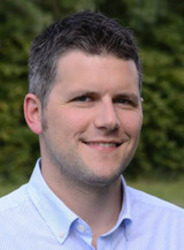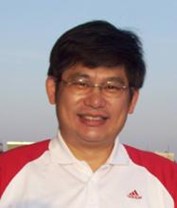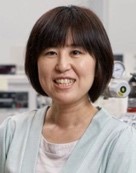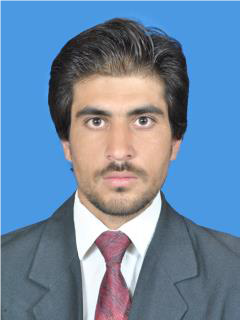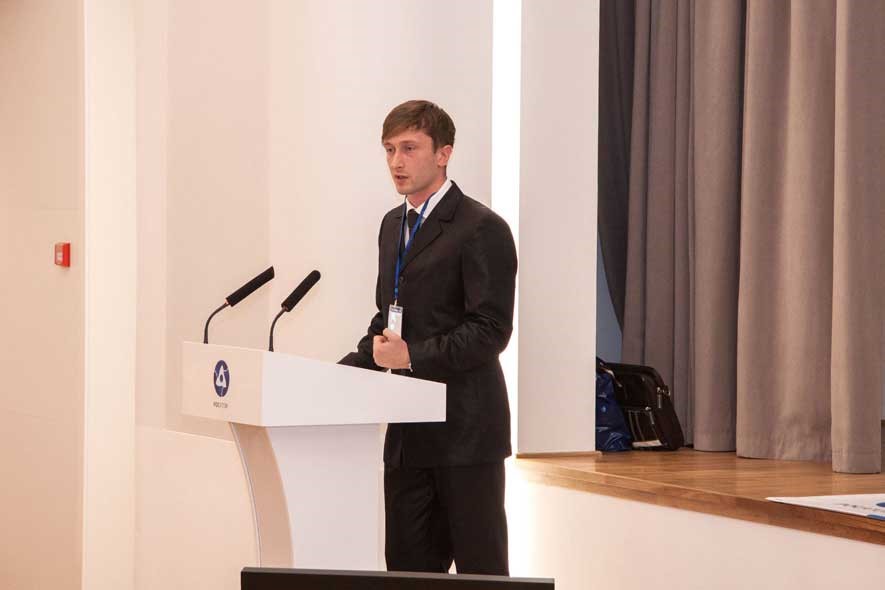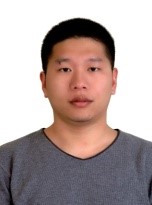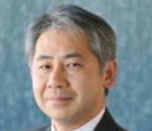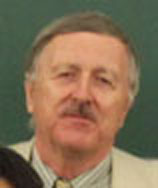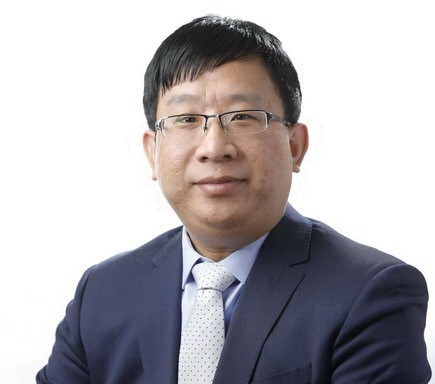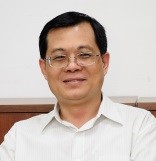Scientific Program
Keynote Session:
A PHP Error was encountered
Severity: 8192
Message: trim(): Passing null to parameter #1 ($string) of type string is deprecated
Filename: pastconference/past-program-schedule.php
Line Number: 239
Backtrace:
File: /efsdata/meetingsint-com/application/views/pastconference/past-program-schedule.php
Line: 239
Function: trim
File: /efsdata/meetingsint-com/application/controllers/Pastconference.php
Line: 128
Function: view
File: /efsdata/meetingsint-com/index.php
Line: 317
Function: require_once
Title: Overcooled gas flow assisted image recognition
Biography:
Konstantin Lyakhov has earned his Ph.D. in theoretical physics in J.W. Goethe University in 2008 in age of 29. Since 2008, he has been an Oil Reservoir Engineer in Petroleum Technologies. In early 2010, he became a Researcher in Institute of Biochemical Physics of Russian Academy of Science. In late 2010, he joined the Plasma Applications Laboratory, Nuclear and Energy Engineering Department of Jeju National University, as a Researcher, and from 2012 as a Research Professor. He has published 12 papers in SCI journals (in 10 of them as a first author, total number of coauthors is no more than 2).
Abstract:
This paper is addressed to possibility of images recognition by using hybrid architecture of optical and quantum-digital parts. Optical part forms a specific light signal, corresponding to different image patterns, and quantum-digital part records and process this information, which is read by quantum states measurement at the end of gas flow. Supersonic overcooled gas flow is proposed to use as a quantum information storage medium, because molecular spectra are well resolved in this case, and, therefore, better control over them by laser field can be implemented. Decoherence level in ensemble of molecules and clusters, representing gas flow, can be controlled by its rarefaction degree and its extension. Population of quantum states can be manipulated either by laser beam reflected from explored object surface(holography) in the case of low intensity or from interior object structures(tomography) in the case of high intensity. For better control over quantum levels population, laser beam is represented as a sequence of specifically shaped laser pulses. Variation of laser intensity, projected into gas flow, is produced by interference of laser beam, reflected from the explored pattern surface, and reference beam. Once irradiated, gas flow feeds spectrometer inlet. In spectrometer, electrons from excited molecules are ejected by applied ionizing laser pulse(finalizing measurement). Obtained electron energy spectra, containing information of original optical image, are recorded by the network of surrounding electrodes, so that information on spatial configuration of the object is translated into time evolution of current induced on electrodes, which is transformed to digital format by analog-digital converter for further processing by comparison of obtained electrical signals with the library of previously recorded signals, corresponding to possible images.
A PHP Error was encountered
Severity: 8192
Message: trim(): Passing null to parameter #1 ($string) of type string is deprecated
Filename: pastconference/past-program-schedule.php
Line Number: 239
Backtrace:
File: /efsdata/meetingsint-com/application/views/pastconference/past-program-schedule.php
Line: 239
Function: trim
File: /efsdata/meetingsint-com/application/controllers/Pastconference.php
Line: 128
Function: view
File: /efsdata/meetingsint-com/index.php
Line: 317
Function: require_once
Title: Electric-field-resolved spectroscopy of molecular vibrations
Biography:
Ioachim Pupeza has completed his PhD in laser physics in 2011 at the Max Planck Institute of Quantum Optics (MPQ) and the Ludwig Maximilians University of Munich, Germany, after receiving diploma degrees in electrical engineering and pure mathematics from the Technical University Braunschweig, Germany in 2006 and 2007, respectively. In 2013/2014 he worked as a postdoctoral researcher at the Institute of Photonic Sciences in Barcelona, Spain, and since 2014 he has been leading the research group Field-Resolved Metrology at the MPQ. He has published more than 35 papers in reputed peer-reviewed journals.
Abstract:
Ioachim Pupeza has completed his PhD in laser physics in 2011 at the Max Planck Institute of Quantum Optics (MPQ) and the Ludwig Maximilians University of Munich, Germany, after receiving diploma degrees in electrical engineering and pure mathematics from the Technical University Braunschweig, Germany in 2006 and 2007, respectively. In 2013/2014 he worked as a postdoctoral researcher at the Institute of Photonic Sciences in Barcelona, Spain, and since 2014 he has been leading the research group Field-Resolved Metrology at the MPQ. He has published more than 35 papers in reputed peer-reviewed journals.
A PHP Error was encountered
Severity: 8192
Message: trim(): Passing null to parameter #1 ($string) of type string is deprecated
Filename: pastconference/past-program-schedule.php
Line Number: 239
Backtrace:
File: /efsdata/meetingsint-com/application/views/pastconference/past-program-schedule.php
Line: 239
Function: trim
File: /efsdata/meetingsint-com/application/controllers/Pastconference.php
Line: 128
Function: view
File: /efsdata/meetingsint-com/index.php
Line: 317
Function: require_once
Title: Oxide semiconductor plasmonics in the infrared range for modern life
Biography:
He has completed his PhD at the age of 28 years from Saga University in 2001. He was a post-doctoral research fellow, and in 2001 - 2005, he became projected research associate at ISIR-Sanken in Osaka University. From 2005 to 2008, he joined the Organization for the Promotion of Research on Nano-science and Nanotechnology at Osaka University. In 2008, he moved as research associate at University of Tokyo. In 2011, he has been assistant Professor at the University of Tokyo. In 2017, he was promoted to associate Professor at the University of Tokyo.
Abstract:
Doped oxide semiconductors have received much attention for emerging surface plasmons in the infrared (IR) region. Recently, oxide semiconductors such as In2O3, ZnO have been launched as new plasmonic nanomaterials. Recently, our group reported surface-enhanced optical spectroscopes with a view to developing new sensing platforms. In this work, we focus on plasmonic response of doped oxide semiconductors with a view to providing valuable strategies for the development of new optical functionalization related to energy-saving technology for window applications. In this presentation, we report surface plasmonic properties of doped transparent oxide semiconductors in addition to those of noble metals such as Au and Ag, and then their thermal shielding applications in the IR region. In particular, three-dimensionally assembled ITO NP nanosheets showed high selective light reflection in the NIR region as a consequence of plasmon coupling between the NPs. A spatial gap between NPs is induced strong electric fields, which is related to a near-field effect on NP surfaces. This near-field phenomenon effectively produces plasmon resonances in the NP nanosheets, which acted as thermal shielding in the IR solar light. This study introduces surface plasmons on oxide semiconductor NPs as one of size-dependent properties for energy-saving applications.
A PHP Error was encountered
Severity: 8192
Message: trim(): Passing null to parameter #1 ($string) of type string is deprecated
Filename: pastconference/past-program-schedule.php
Line Number: 239
Backtrace:
File: /efsdata/meetingsint-com/application/views/pastconference/past-program-schedule.php
Line: 239
Function: trim
File: /efsdata/meetingsint-com/application/controllers/Pastconference.php
Line: 128
Function: view
File: /efsdata/meetingsint-com/index.php
Line: 317
Function: require_once
Title: Environmental factors impacts to bidirectional optical wireless communication
Biography:
Shien-Kuei Liaw received double doctorate from National Chiao-Tung University in photonics engineering and from National Taiwan University in mechanical engineering, respectively. He owned six U.S. patents and coauthored 250 journal articles and international conference papers. He serves as an Associate Editor for a SCI journal. Prof. Liaw was Directors of the Optoelectronic Center and Technology Transfer Center of National Taiwan University of Science and Technology (NTUST). Currently, Prof. Liaw is a distinguished Professor of NTUST, President of the Optical Society (OSA) Taiwan Chapter and Secretary-General of Taiwan Photonic Society. His research interests are in fiber optical sensing and optical communication.
Abstract:
In this talk, high-speed optical wireless communications (OWC) technologies will be reviewed and introduced. The first scheme is bi-directional short-range free-space optical communication with 2x4x10 Gb/s capacity in wavelength division multiplexing (WDM) channels short transmission distance. The single-mode-fiber is used in the optical terminals for both optical transmitting and receiving functions. The measured power penalties for bi-directional, WDM OWC are less than 0.8 dB and 0.2 dB, compared with the back-to-back link and uni-directional transmission system, respectively. The second scheme is hybrid optical fiber and OWC link in outdoor environments such as cross bridge or inter-building system. A sensor head is used for monitoring the condition of bridge, and in the case of the bridge being damaged the transmission path could be changed from fiber link to OWC link to ensure data link connectivity. In both cases, the single-mode fiber are used in the optical terminals for both optical transmitting and receiving functions. The influences of environmental factor including window glasses, air turbulence and rainfall will also be addressed. The colorless and colored window glasses introduce losses under various incident angles, but did not induce substantial power penalties. The air turbulence induces extra transmission loss and instability in the received power. Raindrops are the most influential environmental factor. The bit error rate (BER) test shows that raindrops result in a seriously impaired BER to interrupt the transmission instantaneously. After appropriate performance improvement, these proposed transmission structures show potential applications for outdoor transmission under various natural weather conditions.
Title: Macroscopic 3D transillumination imaging of animal body by scattering suppression of NIR light
Biography:
Koichi Shimizu received M.S. (1976) and Ph.D. (1979) degrees, from University of Washington, Seattle, USA. He was Research Associate in University of Washington in 1974-79. He was Assistant Professor, Associate Professor, and Professor in Hokkaido University, Sapporo, Japan in 1979-2016. He is currently a Professor in Waseda University, Kitakyushu, Japan. He served as an associate editor of IEEE Trans. ITB in 1999– 2007. He is a Fellow of the Electromagnetics Academy, and an editorial board member of Scientific Reports (Nature).
Abstract:
It has been widely known that we can see the surface blood vessel network of the thin part of our body. The near-infrared (NIR) light in the biological window range (700-1200 nm wavelength) is commonly used in biomedical applications such as a vein viewer and the vein authentication. The NIR light can penetrate much deeper in our body than the light of visible wavelength. However, the deep structure could not be visualized because of the strong scattering in body tissue. We developed some techniques to suppress the scattering effect and verified their feasibility in experiments. They are: the extraction of the near- axis scattered light (NASL) and the weakly scattered light (WSL) from the strongly scattered light. The deconvolution with a depth- dependent point spread function is another technique to suppress the scattering effect in a transillumination image. With these techniques we can visualize the macroscopic structure of an animal body in two dimensional (2D) images. Using the 2D transillumination images taken from different orientations, we can reconstruct the cross-sectional images and eventually the macroscopic three-dimensional (3D) image of the internal structure of an animal body. The effectiveness of the proposed technique was examined in the experiments with 3D model phantoms, and its applicability to an animal body was verified in the imaging of experimental animals.
Oral Session 1:
- Optics and Biomechanics/ Modern Optics/Interferometry/ SDM and Beyond/ Optical Metrology/ Optical Imaging

Chair
Jianjun Yu
Fudan University, Shanghai, China

Co-Chair
Pawat Phuaknoi
National Institute of Metrology, Thailand
A PHP Error was encountered
Severity: 8192
Message: trim(): Passing null to parameter #1 ($string) of type string is deprecated
Filename: pastconference/past-program-schedule.php
Line Number: 354
Backtrace:
File: /efsdata/meetingsint-com/application/views/pastconference/past-program-schedule.php
Line: 354
Function: trim
File: /efsdata/meetingsint-com/application/controllers/Pastconference.php
Line: 128
Function: view
File: /efsdata/meetingsint-com/index.php
Line: 317
Function: require_once
Title: Mechanical vibration characteristics of hetero-core fiber optic sensor built in at both clamped ends with bending
Biography:
Abstract:
Title: Laser induced breakdown spectroscopy for analysis of materials
Biography:
Aslam Farooq has vast teaching and research experience. He has expertise in Laser Spectroscopy and analysis of materials using lasers, particularly in nano materials. He has worked in improvement and application of Laser Induced Breakdown Spectroscopy (LIBS) technique for analysis of material and applied this technique for the analysis of Soil. nano composites, Al-Ge alloy and polluted water. In addition to the analysis, LIBS Plasma characterization of various samples has also been carried out.
Abstract:
A PHP Error was encountered
Severity: 8192
Message: trim(): Passing null to parameter #1 ($string) of type string is deprecated
Filename: pastconference/past-program-schedule.php
Line Number: 354
Backtrace:
File: /efsdata/meetingsint-com/application/views/pastconference/past-program-schedule.php
Line: 354
Function: trim
File: /efsdata/meetingsint-com/application/controllers/Pastconference.php
Line: 128
Function: view
File: /efsdata/meetingsint-com/index.php
Line: 317
Function: require_once
Title: Reduction of stress induced bending in MEMS suspended membrane
Biography:
Muhammad Luqman Haider has completed his MS at the age of 24 years from Balochistan University of Information Technology, Engineering and Management Sciences, Quetta, Pakistan. He is currently working as Laboratory Engineer at Balochistan University of Information Technology, Engineering and Management Sciences, Quetta, Pakistan. His research paper on “Stress Optimization for a MEMS Multilayer fixed-fixed beam” is published on the OPTIK journal of Elsevier.
Abstract:
A PHP Error was encountered
Severity: 8192
Message: trim(): Passing null to parameter #1 ($string) of type string is deprecated
Filename: pastconference/past-program-schedule.php
Line Number: 354
Backtrace:
File: /efsdata/meetingsint-com/application/views/pastconference/past-program-schedule.php
Line: 354
Function: trim
File: /efsdata/meetingsint-com/application/controllers/Pastconference.php
Line: 128
Function: view
File: /efsdata/meetingsint-com/index.php
Line: 317
Function: require_once
Title: Experimental investigation of halothane as a new halide donor for nuclear pumped excimer laser
Biography:
Podkopaev Anton is a young researcher in the field of nuclear pumped lasers from the Institute for Physics and Power Engineering named after A. I. Leypunsky (IPPE). Today he is studying in IATE MEPHI as a PhD student, and making his experimental work in IPPE. His PhD research is focused on investigation of new excimer laser gas media for nuclear pumped lasers.
Abstract:
Oral Session 2:
- Systems and Machine Vision/ Optical Computing/ Micro-Opto-Electro-Mechanical Systems (MOEMS)/ Microscopy and Adaptive Optics/ Lasers in Medicine and Biology
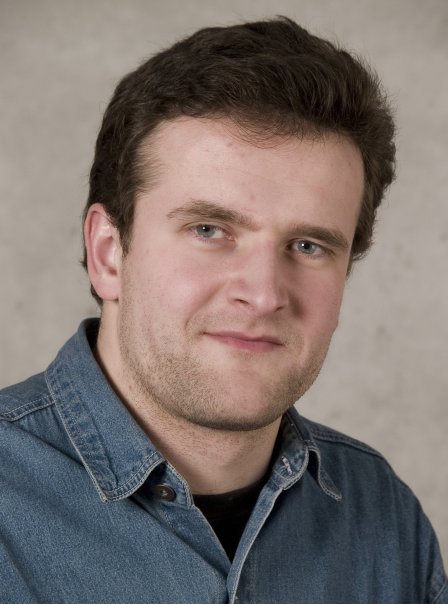
Chair
Konstantin Lyakhov
Jeju National University, South Korea

Co-Chair
Ioachim Pupeza
Max Planck Institute of Quantum Optics, Germany
A PHP Error was encountered
Severity: 8192
Message: trim(): Passing null to parameter #1 ($string) of type string is deprecated
Filename: pastconference/past-program-schedule.php
Line Number: 354
Backtrace:
File: /efsdata/meetingsint-com/application/views/pastconference/past-program-schedule.php
Line: 354
Function: trim
File: /efsdata/meetingsint-com/application/controllers/Pastconference.php
Line: 128
Function: view
File: /efsdata/meetingsint-com/index.php
Line: 317
Function: require_once
Title: Highly efficient and stable semi-transparent perovskite photovoltaic cells
Biography:
In August 2012, Dr. Chang joined the faculty of the Research Center for New Generation Photovoltaics of NCU, where he was an Assistant Research Fellow and was promoted to Associate Research Fellow. In March 2018, he joined the faculty of the Department of Physics of Chung Yuan Christian University as an Associate Professor. His current research interests include interfacial engineering of perovskite solar cells, device physics of solar cells, nano-plasmonic structures for energy conversion and bio-sensing applications, and time-resolved spectroscopic techniques. Dr. Chang is a member of the Phi Tau Phi Scholastic Honor Society (2004), Journal of TVS (Editorial Board) and Nanotechnology (Advisory Panel). He was among the recipients of the R&D 100 Awards Winner in 2015. He was received the Outstanding Research Awards from the NCU for 2016 and 2017.
Abstract:
Title: Recent progress on high-speed optical transmission
Biography:
Dr. Jianjun Yu has completed his PhD from Beijing University of Posts and Telecommunications in 1999. He is a professor in Fudan University and the Director of ZTE TX Inc. He has published more than 500 papers in reputed journals and has been serving as an editorial board member of IEEE Photon. J., IEEE/OSA J. of Lightwave Technol., OSA/IEEE JOCN, and OSA JON. He holds over 62 USA issued patents. He is an OSA Fellow.
Abstract:
A PHP Error was encountered
Severity: 8192
Message: trim(): Passing null to parameter #1 ($string) of type string is deprecated
Filename: pastconference/past-program-schedule.php
Line Number: 354
Backtrace:
File: /efsdata/meetingsint-com/application/views/pastconference/past-program-schedule.php
Line: 354
Function: trim
File: /efsdata/meetingsint-com/application/controllers/Pastconference.php
Line: 128
Function: view
File: /efsdata/meetingsint-com/index.php
Line: 317
Function: require_once
Title: Correlation of a phase change correction and surface roughness
Biography:
Pawat Phuaknoi has his expertise in length measurement and passion in inventing measuring equipment in order to improving product quality of the local industrial sector. His main responsibility at NIMT is not limited to providing measurement service to the customer but also giving consultancy to the private calibration laboratories. He has developed gauge block interferometer system for gauge block calibration. As a result, he is expertise in uncertainty evaluation for gauge block measurement.
Abstract:
A PHP Error was encountered
Severity: 8192
Message: trim(): Passing null to parameter #1 ($string) of type string is deprecated
Filename: pastconference/past-program-schedule.php
Line Number: 354
Backtrace:
File: /efsdata/meetingsint-com/application/views/pastconference/past-program-schedule.php
Line: 354
Function: trim
File: /efsdata/meetingsint-com/application/controllers/Pastconference.php
Line: 128
Function: view
File: /efsdata/meetingsint-com/index.php
Line: 317
Function: require_once
Title: Inexpensive U-bent optical fiber sensor utilizing localized surface plasmon resonance (LSPR) technique
Biography:
Dr. Dimpi Paul received her M.Sc. degree in physics from the Tezpur University, in 2012. She is currently working in “Applied optics and photonics research Laboratory” under the supervision of Dr. R. Biswas and Prof. N. S. Bhattacharyya. She has published 7 papers in peer reviewed journal along with 2 book chapters and one proceedings. Her current research interest is fiber-optic sensors and modelling of PBG structured fiber. Recently she has completed her Ph.D from Deptt. Of physics, Tezpur University. She has published more than 6 papers in reputed journals and has been serving as guest lecturer (GL) at NITAP
Abstract:
Keynote Session:
A PHP Error was encountered
Severity: 8192
Message: trim(): Passing null to parameter #1 ($string) of type string is deprecated
Filename: pastconference/past-program-schedule.php
Line Number: 239
Backtrace:
File: /efsdata/meetingsint-com/application/views/pastconference/past-program-schedule.php
Line: 239
Function: trim
File: /efsdata/meetingsint-com/application/controllers/Pastconference.php
Line: 128
Function: view
File: /efsdata/meetingsint-com/index.php
Line: 317
Function: require_once
Title: Macroscopic 3D transillumination imaging of animal body by scattering suppression of NIR light
Biography:
Koichi Shimizu received M.S. (1976) and Ph.D. (1979) degrees, from University of Washington, Seattle, USA. He was Research Associate in University of Washington in 1974-79. He was Assistant Professor, Associate Professor, and Professor in Hokkaido University, Sapporo, Japan in 1979-2016. He is currently a Professor in Waseda University, Kitakyushu, Japan. He served as an associate editor of IEEE Trans. ITB in 1999– 2007. He is a Fellow of the Electromagnetics Academy, and an editorial board member of Scientific Reports (Nature).
Abstract:
It has been widely known that we can see the surface blood vessel network of the thin part of our body. The near-infrared (NIR) light in the biological window range (700-1200 nm wavelength) is commonly used in biomedical applications such as a vein viewer and the vein authentication. The NIR light can penetrate much deeper in our body than the light of visible wavelength. However, the deep structure could not be visualized because of the strong scattering in body tissue. We developed some techniques to suppress the scattering effect and verified their feasibility in experiments. They are: the extraction of the near- axis scattered light (NASL) and the weakly scattered light (WSL) from the strongly scattered light. The deconvolution with a depth- dependent point spread function is another technique to suppress the scattering effect in a transillumination image. With these techniques we can visualize the macroscopic structure of an animal body in two dimensional (2D) images. Using the 2D transillumination images taken from different orientations, we can reconstruct the cross-sectional images and eventually the macroscopic three-dimensional (3D) image of the internal structure of an animal body. The effectiveness of the proposed technique was examined in the experiments with 3D model phantoms, and its applicability to an animal body was verified in the imaging of experimental animals.
A PHP Error was encountered
Severity: 8192
Message: trim(): Passing null to parameter #1 ($string) of type string is deprecated
Filename: pastconference/past-program-schedule.php
Line Number: 239
Backtrace:
File: /efsdata/meetingsint-com/application/views/pastconference/past-program-schedule.php
Line: 239
Function: trim
File: /efsdata/meetingsint-com/application/controllers/Pastconference.php
Line: 128
Function: view
File: /efsdata/meetingsint-com/index.php
Line: 317
Function: require_once
Title: Optical interconnect opportunities for future server memory systems
Biography:
Yasunao Katayama received the B.S. and M.S. degrees in physics from the Tokyo University, Tokyo, Japan, in 1984 and 1986, respectively, and the Ph.D. degree in electrical engineering from the Princeton University, Princeton, NJ, USA, in 1994. He is currently with IBM Research—Tokyo, Tokyo, Japan. He has been involved with a variety of academic disciplines covering physics, information theory, VLSI design, computer system architecture, optical/wireless interconnect, and future computing paradigms.
Abstract:
This talk deals with innovative computer system architectures with using advanced optical interconnect. In more than a decade ago, we proposed system disaggregation potential, in particular, in between CPU and memory, via optical interconnect for more flexible, scalable, and optimized system arrangements. This approach has been considered as a promissing near term option in modern computer systems. As a long term possibiity, we discuss how brain-inspired computing can take advantage of innovative optical technology features. Information processing in the brain is considered as communication centric rather than computation centric, and therefore, advanced interconnect ideas, such as freespace interconnect and optical crossbar switching is expected to play an increasingly essential role in future brain-inspired computing systems.
A PHP Error was encountered
Severity: 8192
Message: trim(): Passing null to parameter #1 ($string) of type string is deprecated
Filename: pastconference/past-program-schedule.php
Line Number: 239
Backtrace:
File: /efsdata/meetingsint-com/application/views/pastconference/past-program-schedule.php
Line: 239
Function: trim
File: /efsdata/meetingsint-com/application/controllers/Pastconference.php
Line: 128
Function: view
File: /efsdata/meetingsint-com/index.php
Line: 317
Function: require_once
Title: Novel guided fluidic assembling technology for optical devices
Biography:
He started off his career in physics from the year 1984 at Indian Institute of Technology, Kharagpur in Industrial Physics. During his career in IIT Delhi, he studied aboutQuantum Electronics "Dynamic Laser Light Scattering to study heat aggregation in biopolymers". Dr. Brahm Pal Singh did his Ph.D. from Nagoya University in Japan and the field of study was Quantum Engineering/ "Studies on the Stability of Harmonically Mode-Locked Erbium-Doped Optical Fiber Ring Lasers".
Abstract:
A PHP Error was encountered
Severity: 8192
Message: trim(): Passing null to parameter #1 ($string) of type string is deprecated
Filename: pastconference/past-program-schedule.php
Line Number: 239
Backtrace:
File: /efsdata/meetingsint-com/application/views/pastconference/past-program-schedule.php
Line: 239
Function: trim
File: /efsdata/meetingsint-com/application/controllers/Pastconference.php
Line: 128
Function: view
File: /efsdata/meetingsint-com/index.php
Line: 317
Function: require_once
Title: Current status of SBS PCM based self-navigation of laser drivers on IFE pellets injected into the reactor chamber
Biography:
Abstract:
Current status of a recently proposed novel approach to inertial fusion energy (IFE) technology, where phase conjugating mirrors (PCM) generated by stimulated Brillouin scattering (SBS) are employed in order to implement an automatic self-navigation of every individual laser driver onto injected IFE pellets, will be reviewed. This novel technology is of a particular importance to the direct drive schemes of pellet irradiation, which is the basis of a number of IFE projects. If successful in its full scale realization, this automatic aiming scheme would greatly reduce the current technical challenges of adjusting large and heavy optical elements (final mirrors located in front of an IFE reactor) during each shot with a typical repetition rates of several Hz in order to achieve the required level of aiming accuracy of the order of about 20 micrometers.
In order to make this self-navigating technology working properly, a special target displacement compensation system was designed. This design is specific for every individual laser driver according to its direction of propagation inside of the reactor with respect to the trajectory of the injected pellets.
This self-navigation technology was already tested experimentally on a smaller scale and proved is functionality. Featuring no moving parts, this technology would allow for a high number of laser drivers to be employed. Operating with lower energies (EL < 1 kJ per driver) a potential damage caused by perpendicular SBS to the entrance windows (as encountered in classical irradiation schemes, e.g., at NIF) which needs a special attention would be non-existent.
The latest achievement in the gradual step-by-step development of this technology is a conceptual design for the removal of the unconverted basic laser harmonic. This is needed since the corresponding schemes already developed to deal with this issue (e.g., for LMJ or NIF) are not applicable in the SBS PCM IFE technology. Hence a special Faraday insulator was proposed. For the basic harmonic propagating in both directions (to be removed on its return) this insulator will work in its classical configuration. However, the higher harmonic (propagating only in the backward direction towards the reactor) will be allowed to pass through the insulator and enter the reactor.
Having the unconverted harmonic removal problem solved, a serious development of the SBS PCM based laser driver can be started to establish an upper limit of energy at which the required laser beam parameters would be still of an acceptable quality. It is very convenient that for these tests only one laser driver is necessary, thus much easier to do such research. This upper energy limit for one laser driver comes from the usage of SBS PCMs in the technology of self-navigation steering of the laser beams on the injected pellet, as it prevents spatial filtering to be employed to take care of the required laser beam quality. PCM mechanism would do the job instead, but this approach simply has its limits on energy which can be successfully handled. And this energy needs to be established experimentally. Such energy would determine the number of the laser drivers needed for a direct drive fusion facility working in the expected 5-10 Hz repetition regime of an IFE power plant. Such laser drivers working with moderate energies would be also much easier to design for the required repetition rate.
Oral Session 1:
- Engineering Applications of Spectroscopy/ Applications and Trends in Optics/ Optoelectronic Devices, Photonics, Nanophotonics and Biophotonic/ Organic Optoelectronics and Integrated Photonics/ Optical Communications, Switching and Networks/ High-speed Opto-electronic Networking
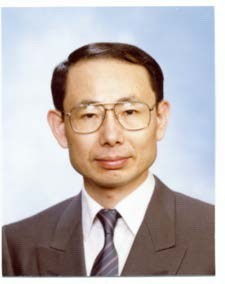
Chair
Koichi Shimizu
Waseda University, Japan
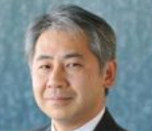
Co-Chair
Yasunao Katayama
IBM Academy of Technology, IBM Research, Japan
A PHP Error was encountered
Severity: 8192
Message: trim(): Passing null to parameter #1 ($string) of type string is deprecated
Filename: pastconference/past-program-schedule.php
Line Number: 354
Backtrace:
File: /efsdata/meetingsint-com/application/views/pastconference/past-program-schedule.php
Line: 354
Function: trim
File: /efsdata/meetingsint-com/application/controllers/Pastconference.php
Line: 128
Function: view
File: /efsdata/meetingsint-com/index.php
Line: 317
Function: require_once
Title: High-power high-beam-quality 330-nm laser from a frequency-quadrupled nd: Yag laser
Biography:
Shen-Jin Zhang received the PhD degree from Xidian University, Xian, China in 2006. He is the deputy director of Key Lab of Function Crystal and Laser Technology, Technical Institute of Physics and Chemistry, Chinese Academy of Sciences. His research interests include nonlinear optics, UV & VUV laser and their applications. He has published more than 25 papers in reputed journals.
Abstract:
A PHP Error was encountered
Severity: 8192
Message: trim(): Passing null to parameter #1 ($string) of type string is deprecated
Filename: pastconference/past-program-schedule.php
Line Number: 354
Backtrace:
File: /efsdata/meetingsint-com/application/views/pastconference/past-program-schedule.php
Line: 354
Function: trim
File: /efsdata/meetingsint-com/application/controllers/Pastconference.php
Line: 128
Function: view
File: /efsdata/meetingsint-com/index.php
Line: 317
Function: require_once
Title: 6.45μm laser for tissue ablation with high precision
Biography:
Yu SHEN received the Ph.D. degree, in 2014, from Technical Institute of Physics and Chemistry, CAS, Beijing, China. Currently, she is an associate professor with the Technical Institute of Physics and Chemistry, CAS. Her research interests include high power all-solid-state laser, laser materials and nonlinear optical materials.
Abstract:
A PHP Error was encountered
Severity: 8192
Message: trim(): Passing null to parameter #1 ($string) of type string is deprecated
Filename: pastconference/past-program-schedule.php
Line Number: 354
Backtrace:
File: /efsdata/meetingsint-com/application/views/pastconference/past-program-schedule.php
Line: 354
Function: trim
File: /efsdata/meetingsint-com/application/controllers/Pastconference.php
Line: 128
Function: view
File: /efsdata/meetingsint-com/index.php
Line: 317
Function: require_once
Title: Residual stress reduction in si3n4/sio2 notch filters by reactive pulsed magnetron sputtering
Biography:
Dr. Chuen-Lin Tien received his Ph. D degree in Optical Sciences from National Central University (Taiwan), in 2000. He was a senior researcher in Chung Shan Institute of Science and Technology from 1987 to 2004. In 2004, he served as assistant professor in the Department of the Electrical Engineering of Feng Chia University, Taiwan. In 2010, he promoted to a full professor position. His research interests are optical design, optical thin film, optical interferometry, thin film stress measurement, and fiber-optic sensors.In 2017, he founded the Center of Thin Film and Measurement Technology to develop advanced thin-film coating technology and to strive for more academic-industry cooperation projects. He also built up an Optical Thin Film and Measurement Technique Alliance. This alliance will expand optical technology applications and promote the industrial technology upgrade.


